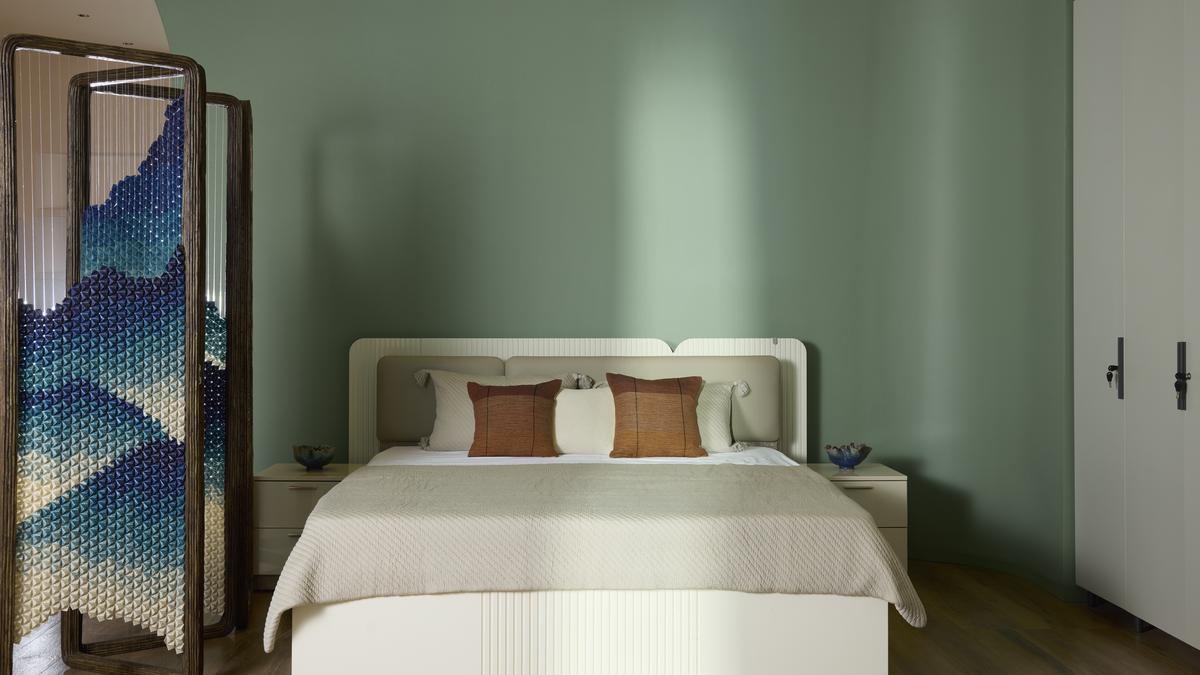Furniture shopping usually begins with a colour palette and moodboard, a few reels saved on Instagram, and a flexible budget on how much you are willing to splurge on that one statement couch, rug or lounge chair. To help make all those design decisions under one roof, the new Interio by Godrej flagship store in Vikhroli, Mumbai, spread across a sprawling 22,000 sq. ft. takes its inspiration from Indian craftsmanship and contemporary aesthetics.
Vaishali Lahoti
Its spatial design, conceptualised over a year ago, was led by Mazumdar Bravo Architects, celebrated for their blend of contemporary minimalism informed by a distinctly Indian warmth. With vignettes showcasing Indian artistry to spaces for modular, reconfigurable furniture or new lifestyle categories such as children’s, outdoor, and gaming collections, “every detail, from layout to materiality, was designed to bring the brand’s identity to life — timeless, functional and rooted in Indian design sensibilities,” explains Vaishali Lahoti, deputy general manager, Godrej Interio.

Blending craft and conscious design
For Aditi Anuj, founder and creative director of Jaipur-based Adigami Studio, origami is both a medium and meditation. For the space titled ‘Breathe’ within the Interio store, her team has worked with Bengaluru-based design studio Oorjaa to create the installation ‘Hues of Blues, The Byōbu’. The Byōbu or wind wall was a Japanese folding screen, painted with scenes of nature and poetry, that transformed rooms into contemplative sanctuaries. Within a lantana frame (crafted by Oorjaa), over 15,000 hand-folded origami modules, each crafted from a 5-cm square, create fluid waves of blue inspired by the timeless Japanese motif of the great wave.
“Our installation draws from the Bauhaus philosophy, where art, design, and engineering come together in perfect balance. Paper folding was an integral part of the movement, a way to explore structure, form, and transformation. Through this installation, we reimagined those principles in the brand’s signature colours, creating a piece that reflects its spirit of play, innovation, and purpose,” states Anuj.

In ‘Flow’, curves replace corners, and a delicate, wispy light design of lantana and banana paper ( created by Oorjaa) adds a luminous glow, accentuated by handwoven rugs in a living space.
The store focuses on both form and function, conscious of how the outdoors influences the indoors. “Homeowners are conscious about what works better for them, where aesthetics are more integral than surface decoration, and maintenance must be hassle-free, too. To deal with the humidity we experience in India, all the metal products are given moisture-resistant treatment, the steel kitchen modules are galvanised, and powder-coated so the elements do not corrode. Engineered wood is graded and treated as well, to withstand moisture retention,” says Lahoti.

Breathe – a bamboo sculpture, origami screen, and hand-knotted rug, each detail is chosen to soothe.
Spaces are carved out to pay homage to award-winning craftsmanship in various material traditions. Cane Concept, founded by designer Aku Zeliang, celebrates the Ao-Naga weaving technique by reinterpreting tribal motifs into modern designs for accessories. While a crimson interwoven decor piece from the Tekirak Collection, reflects Zeliang’s sustainable design ethos, crafted from responsibly foraged bamboo from Peren’s forests and rattan, it blends climate-conscious construction with contemporary design.
Sirohi’s (a women’s craft collective from Sirohi, Rajasthan) rust-orange tapestry brings a living room space to life using traditional charpai and macramé techniques, to create art from natural fibres and upcycled waste. Using ceramic as his muse, Brahmdeo Ram Pandit, a Padma Shri awardee, creates three clay-cobalt blue statements, bridging texture and timeless artistry. Elsewhere in the store, three metal instruments tell the story of Indian antique metalwork techniques, from Makaan, a Jaipur-based interior concept store by designer Tahir Sultan.

‘Flow’ is a space where clay meets colour with tribal wood, banana paper lights, and handwoven rugs.
The soft furnishing, furniture and accessories can be personalised and customised. Lahoti says, “This space was designed so you can slowly unfold the store, see options and evaluate your choices. Indians like experimentation, and we had an opportunity to curate these spaces with a lot of colour. For home decor and design, being purpose-led is important — you can pick both colours and concept pieces if you are creating a calm aesthetic or a more energetic corner.”
She adds: “Lastly, the Indian middle class is not so constrained by tight budgets anymore, but is more focused on what they are looking for and are willing to stretch their limits. People want to connect with their roots in ways that are modern, and are willing to listen and pay attention to the process, people and materiality.”

Curated look at the Interio by Godrej flagship store.
Timeless utility
There’s also an ode to Godrej’s century-long design journey, from its eponymous steel almirah to safes, which transitioned to modular storage solutions. “One of our oldest patented cupboards, from the 1930s, is showcased, and the whole wardrobe gallery talks about the strength of our wardrobe collection in steel and wood,” explains Lahoti.
The freelance writer is based in Chennai.
Published – November 14, 2025 06:55 pm IST






